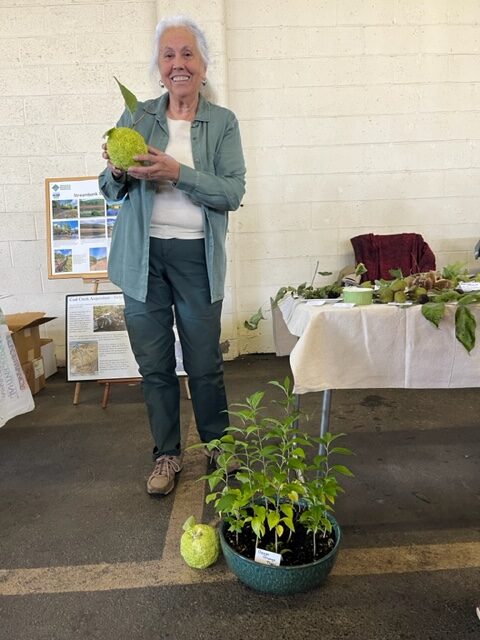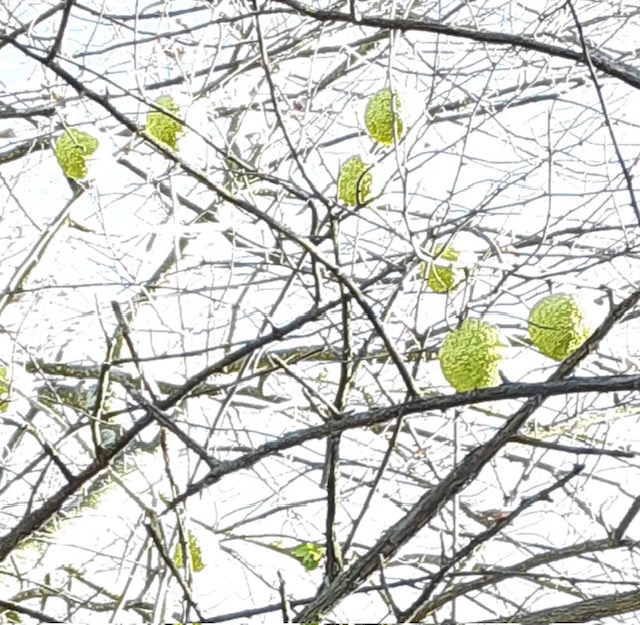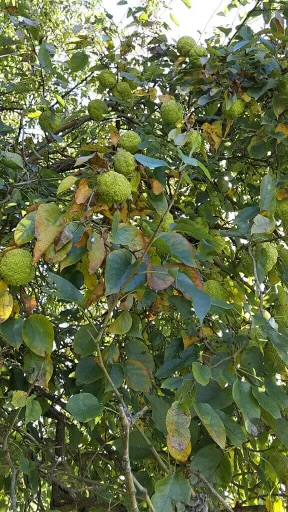By Susan Sprout
As an historical reenactor using the living history personae of a Pre-Columbian medicine woman or a colonial dame or a Civil War Era soldier, I have had the distinct honor of introducing the people visiting my presentations to the plants and trees that I love so much. One special tree that I was introduced to in Virginia twenty-four years ago near a Civil War reenactment is Osage Orange, Maclura pomifera, a member of the Mulberry Family, MORACEAE. It just grabbed my attention. If you happen upon one, hiking or driving by fencerows on backroads or near abandoned pasturelands after leaf fall, Osage Orange may grab your attention as well! The greenish-orange fruits on mature female trees can grow up to 4 and1/2 inches in diameter and hang there like early Christmas tree decorations until they fall off!

Native to the southwestern part of the country – Texas, Oklahoma, Arkansas – they are more common south of Pennsylvania, but they are found growing here and have been planted in many different states for a variety of reasons. Native Americans fashioned bows using their tight, springy wood; farmers and ranchers planted rows of them as prickly fences to keep livestock from straying. They are definitely not planted for food as they are inedible by everything despite the word “orange” in their name.

I carried home with me the fruits of this amazing tree for years, trying to get them to grow nearby. I would just dig a hole and pop the fruits in it and let nature take its course. No luck, even though each one of those hunky fruits could contain hundreds of seeds. Ah ha! Those fruits must come from a female tree whose June flowers have been germinated by bees carrying pollen from a tree with male flowers! Finally! Three years ago, success appeared in the form of a small forest of tiny, two-leafed saplings growing up in a tangled mass. As young as they were, I recognized their bright dye-filled yellow roots as I transplanted them in a dish. I now have a grove of Osage Orange trees to bring into my house for winter. Their yellow fall leaves are just beginning to drift off. In the spring, they will be planted here and there outside. Hopefully, they will have both sexes of trees growing near each other so they can reproduce.


